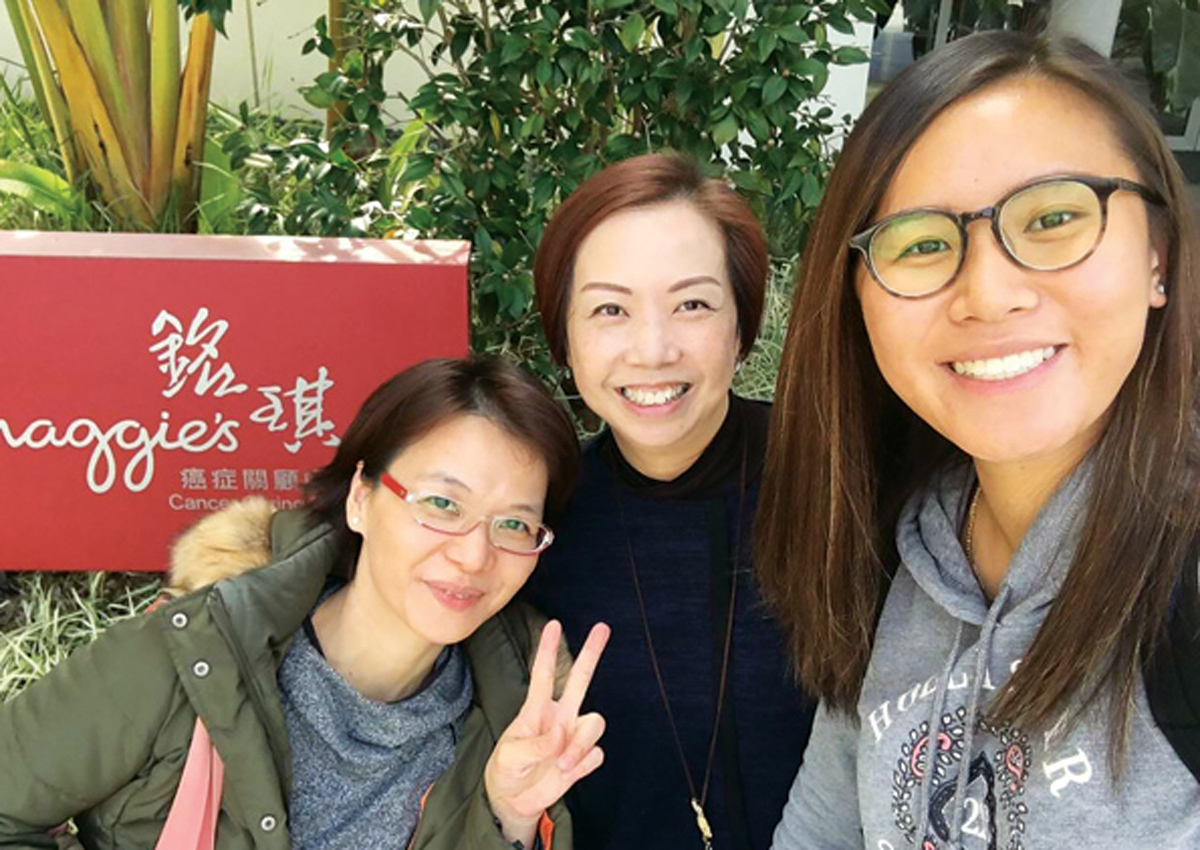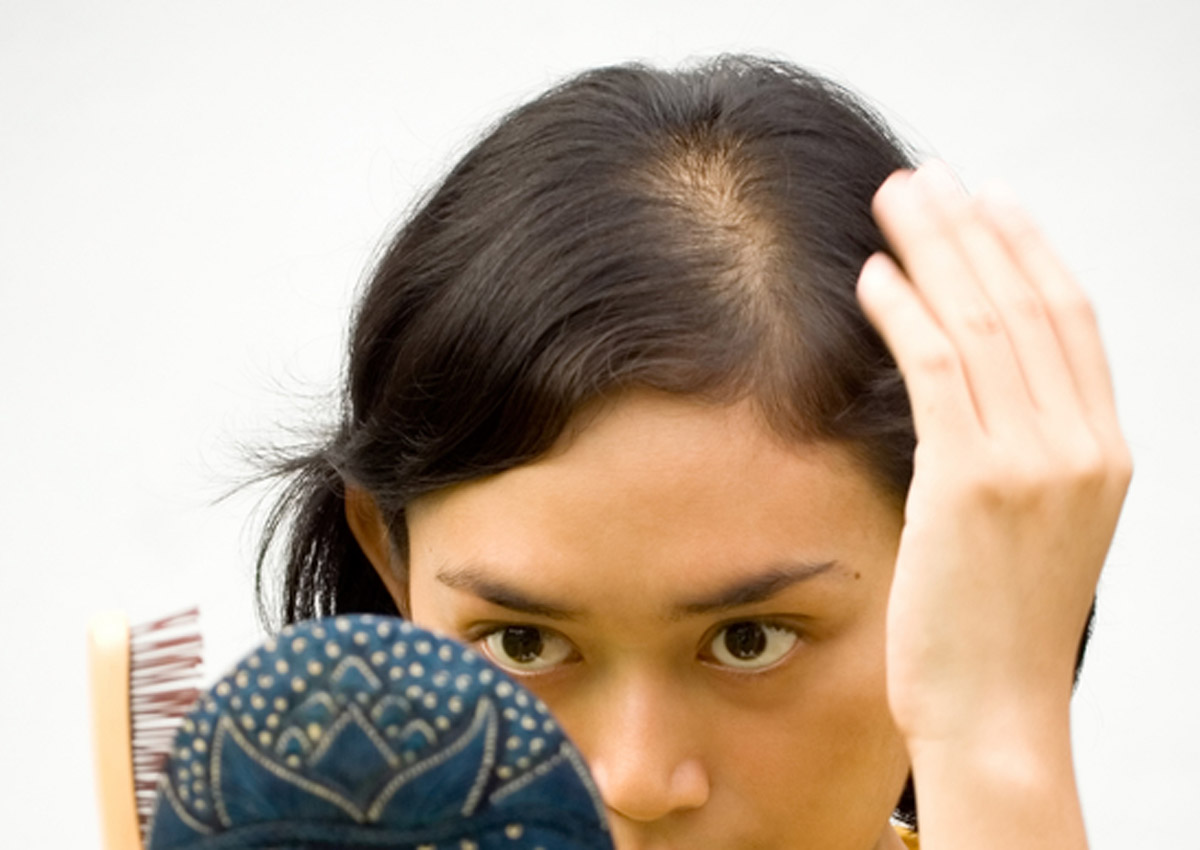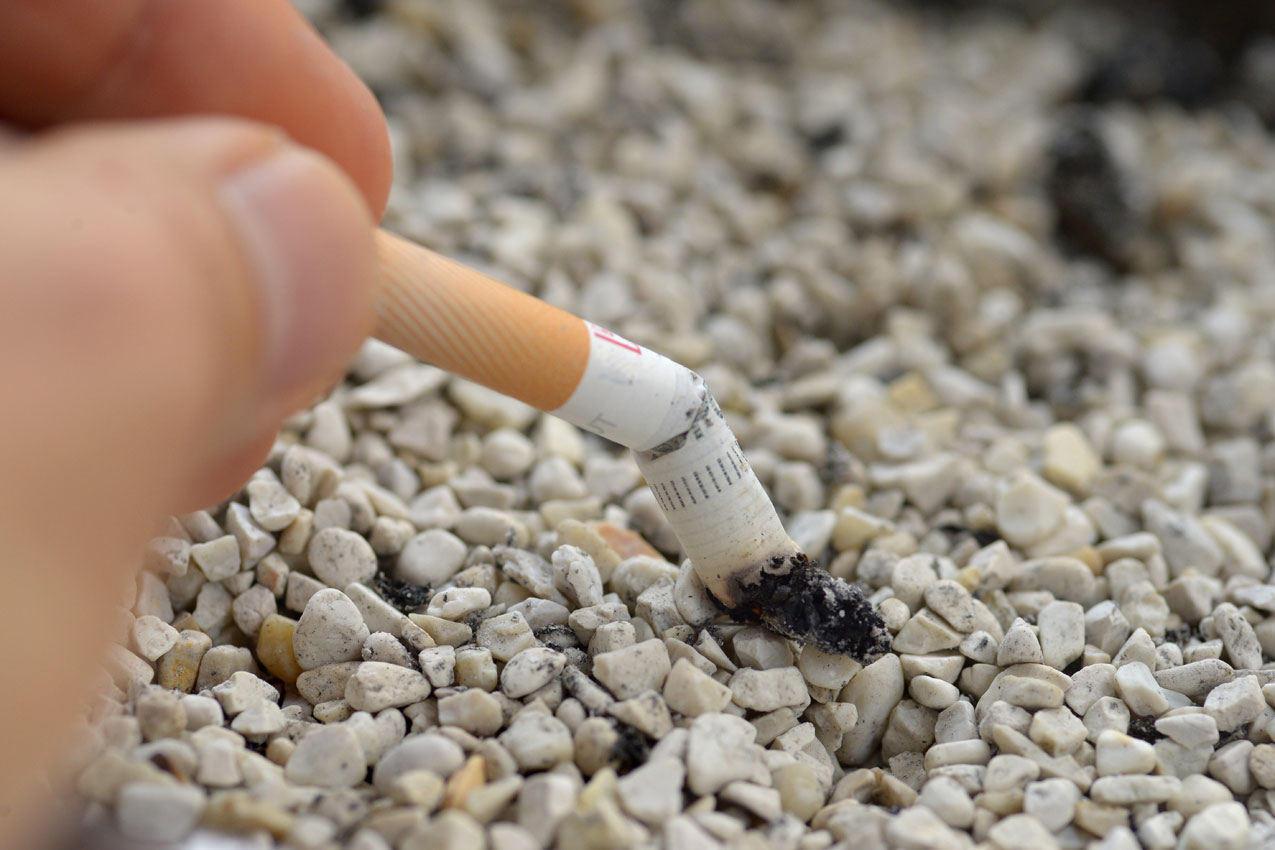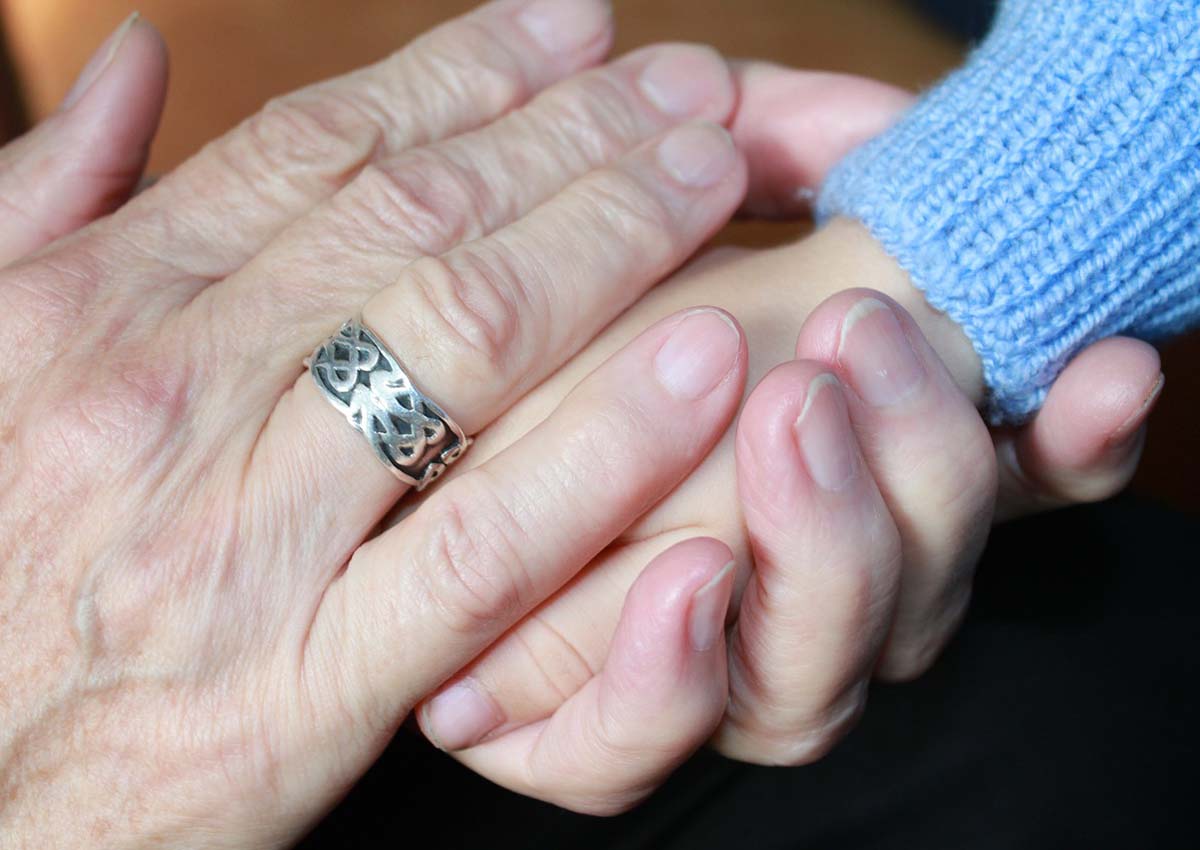Special lingerie helps heal the scars of breast cancer

Every year more than 2,300 new cases of the disease are diagnosed in Hong Kong, and after recovering from surgery each victim has to confront the trauma, both physical and mental. Wang Yuke reports.
Lau Sau-man flashed a victory sign as she told how she survived breast cancer. She’d travelled a hard road getting to where she could claim victory; first, there was the fear, then despair that morphed into anguish.
It was a bra specially designed for breast cancer patients that brought her back from a psychological abyss.
Breast cancer has been the number one cancer killer of women in Hong Kong since 1993. The number of cases tripled from 1,152 in 1993 to 3,868 in 2014. Since then, more than 2,300 new cases have been reported in the city per year, with six women diagnosed with the disease every day.
In 2014, 604 out of 3,868 patients-15.6 per cent-died. However, as a result of medical advances, the survival rate of patients with early-stage breast cancer has reached about 80 per cent in Hong Kong.
Lau, 53, learned there was trouble when a regular medical check exposed an abnormality in her left breast. A mammogram revealed the worst: She had cancer. That was two years ago.
An immediate mastectomy was ordered. Then came chemotherapy and electrotherapy. At first, the loss of her breast didn’t bother Lau too much. “At that time, nothing was more important than my health,” she said. “As a single mother of two, I told myself I needed to be alive for the sake of my sons.”
A PAINFUL CHANGE
It took six months before the change began to weigh on her.
Back pain came first as the loss of her breast caused her body to overcompensate, throwing her off balance and straining the right side of her body.
Then, the feeling she wasn’t a complete woman anymore started to gnaw at her. “Especially when I was with my girlfriends, I was aware of being different,” she said.
She was embarrassed by her friends’ pitying looks and the quizzical stares of strangers. To feel more “normal”, Lau stuffed the empty cup of her bra with a wad of cotton
She tried shopping at regular lingerie shops, but the bras irritated her skin. “My skin became very sensitive as a side effect of the radiation therapy. The material in bras for healthy women was too scratchy for me.”
She couldn’t wear underwire bras after the surgery either, because they restricted her breathing and movement.
Before the change, Lau was on top of fashion and meticulous about her appearance. On special occasions she liked to wear something a little provocative.
Cancer left her with massive scars on her chest and, in the areas where electrotherapy was applied, darkened skin. “I didn’t have the privilege of wearing off-the-shoulder dresses anymore. Styles that could expose my scars didn’t belong to me. My choice became limited fashion-wise.”
Lau found people staring at her unusual skin colour when she was swimming or trying on clothes. She had different skin tones on either side of her body.
Lau has been a widow since 2013. The time came when she wanted to start meeting men, build a new family and carry on with her life. But her subsequent mastectomy undermined her confidence and left her despairing of finding love again.
“I found lots of my male friends were very superficial. They would often judge and make casual remarks about a woman’s looks. They would joke-something like, ‘Look, her boobs are fake!'”
Remarks like that made Lau self-conscious and made her doubt the value of breast reconstruction surgery.
She found emotional support by meeting other breast cancer survivors at Maggie’s Caring Centre at the city’s Tuen Mun Hospital. Some related how their husbands had rejected them. “Some of their husbands had affairs. Some even divorced them,” Lau said, shaking her head. At the centre, she learned she was not alone.
One day, a newcomer arrived at Maggie’s to give away free bras. She was Lonna Kwan, who runs a lingerie shop selling bras customised for women with breast cancer.
Each cancer survivor was measured to ensure she was given the right-size bra. The physical condition of each person was taken into account. “It’s really comfortable, as if it is tailor-made for me. Not scratchy, not itchy to my sensitive skin,” Lau said. She noticed that while wearing the bra, she no longer felt any muscle strain between her left underarm and her breast when she moved her arms.
Even more important was recovering her pride as a woman.
“My breasts came back, my femininity returned, and so did my confidence,” Lau recalled, pushing out her chest. “I can wear pretty clothes again, even low-cut dresses and shirts that were a no-no for me before, because the bras have lace and stylish elements to cover the surgery scars.”
Lau described putting on her new bra as a motivating and life-changing experience.
She thought back to the time several days before her surgery when a nurse showed her photos comparing women before and after mastectomy to brace the patient for the psychological shock of disfigurement.
“When I saw the pictures, I broke down. I cried. I was helpless. I asked myself, ‘Why, why me?'” Lau said, her voice quaking at the memory.
For a while she was even afraid of seeing her own reflection.
“I’d simply look away,” she said. “But the toughest times have passed. I am back! Now I have no trouble looking in the mirror because the ‘me’ in the mirror is a normal healthy woman,” she said, flashing an elated grin.
COMPASSION, COMMERCE
Kwan opened her lingerie shop, Comfort Me, after watching a close family member go through the trials of breast cancer-the fear, the post-surgical trauma, the battering of self-esteem. Five years ago, her relative was diagnosed with Stage 2 breast cancer. Shortly after, she had her right breast removed.
“She couldn’t accept her new appearance-a normal breast on the left and a sunken one on the right. The absence was apparent because she had large breasts. It was impossible to hide,” Kwan said.
Kwan remembers visiting the stricken woman-broken and in tears for almost the whole day-who became irritable and started imagining she was haunted by evil spirits.
Gradually, Kwan said, her relative became progressively more withdrawn, only going out for regular doctor’s appointments or grocery shopping.
She asked Kwan to buy her a false breast and post-surgery bras. A wig, a false breast, and three bras cost Kwan HK$4,000 (S$692).
“I didn’t expect dedicated products for breast cancer patients to be so costly,” said Kwan, relating how she bought the items from a hospital.
According to Kwan, hospitals have regular suppliers. The bras sell for high prices-HK$400 to HK$500 each.
“It imposes an extra burden on cancer patients and their families, who may have spent a fortune on surgeries and many therapies,” she said. In her relative’s case, the total cost of her medical treatment was HK$260,000.
Kwan wanted to provide something more affordable. In 2015, she and her partner, whose mother has 30 years’ experience of manufacturing lingerie, started an online shop, selling lingerie specially designed and tailored for breast cancer survivors.
In December, the small company was awarded grants by the Social Innovation and Entrepreneurship Development Fund, which allowed them to launch their first storefront outlet, near Prince Edward Road West.
The bras cost just a quarter of the average market price-ranging from HK$299 to HK$500 for three.
The company also addresses the needs of women still in therapy. From her experience of tending to her relative, Kwan had learned that some products on the market were not user-friendly and needed improvement.
For example, Kwan and her partner used modal cotton to create bras for women undergoing electrotherapy, who are prone to extremely sensitive skin and blisters. The cotton is unlikely to break blisters or cause skin irritation. Bras intended for post-surgical use have clasps at the front.
AMBASSADORS
In the past two years, a growing number of breast cancer patients and survivors have come to the shop. Some have even volunteered to work there part time. Kwan calls them “ambassadors”.
Lau is one of them, working Mondays and Saturdays. Because she is so aware of the changes that come during medical treatment, she has become expert at choosing bras.
While her main responsibility is to assist customers, Lau has an even more important role-that of setting a positive example. She hopes her story will show other survivors that “this is not the end of the world and you cannot give in to the disease”.
Many customers are downcast and ashamed of their bodies when they first arrive. Her strategy is to make them feel better by challenging them: “‘Do you think I am ugly? I’m not ugly, am I? But I used to be bald, frail and I felt unattractive.'”
Some women come in only needing someone to talk to and confide in. “They come here just to find someone who can lend an ear and understand them. People like us need to vent, to get rid of the negative feelings, whether it’s sadness or anger or self-loathing,” Lau said.
Acknowledging that someday the cancer may return, she is determined to live in the present and be a role model for those who haven’t made peace with their plight.
Kwan shares that vision. She wants to help restore the self-esteem and dignity of breast cancer survivors and help them find the will to carry on. Kwan has reached out to mainland hospitals and has offered to supply lingerie at low prices.
“They are interested in cooperating. Staff members have told me their patients fret about poorly-fitting bras and high price tags,” she said.
Kwan understands the difficulties of breast cancer survivors-and knows that an item as seemingly simple as a bra can play a vital role in restoring their self-confidence and faith in their womanhood.
Published at Sun, 17 Sep 2017 07:00:00 +0000





